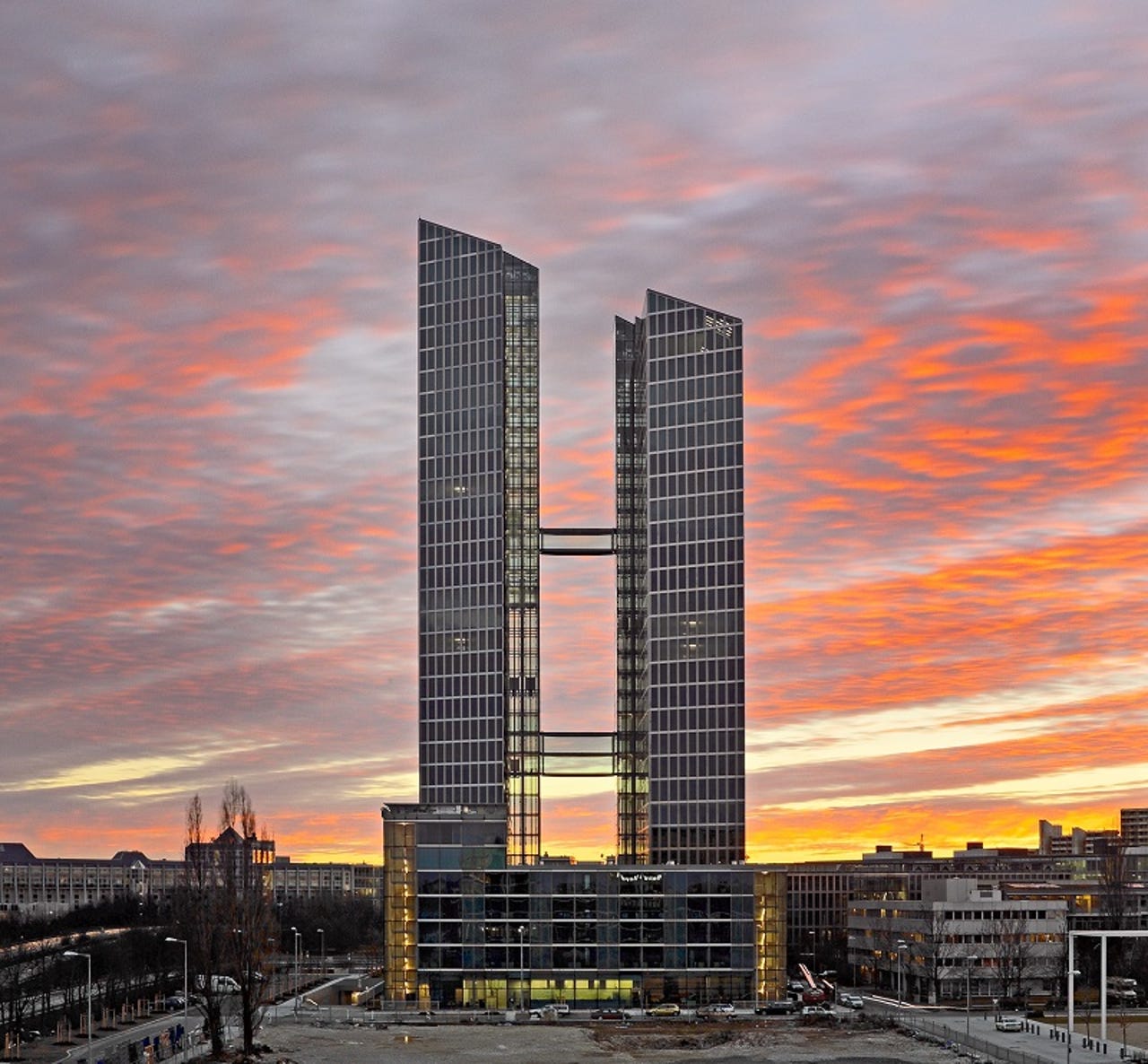'IT is coming out of the back office': IBM doubles down on Internet of Things with new HQ


The Munich headquarters of IBM's Internet of Things unit.
IBM's Watson is moving into a new place; the cognitive computing effort's IoT arm is getting a new headquarters in Germany.
Back in March, IBM announced it was spending $3bn over four years to establish a separate Internet of Things business unit, bringing together existing connected objects services into a single division. Some six months later, that IoT business unit came into being, with former Thomas Cook CEO Harriet Green as general manager. Since then, the business unit has gained an extra Watson in its name, becoming the Watson IoT business unit -- a sign of how much importance the company now puts on its cognitive computing tech.
Today the company announced the opening of the Watson IoT group's global headquarters in the German city of Munich, a 670,000 square-foot facility in the city's glossy Highlight Towers.
The Munich centre is "one of the biggest investments that we've made in Europe", Green said. "There will be a lot of design, engineering, lab work. It's a working, living, breathing technology environment, but not just people sitting down writing code. It's people gathering this data, understanding the data, interrogating the data, providing solutions. It's quite an intense work emvironment.
Green told ZDNet that Big Blue made the decision to set up the HQ in Germany's third city due to its base of tech workers.
"We chose Munich because of the amazing talent: lots of designers, developers, architects, people who are suited to this type of work. Germany is very focused on Industry 4.0 and the whole IoT environment. The German government, both state and central, is very supportive."
The Munich HQ will house over a thousand IBM staff including engineers, over half the company's projected total headcount for IoT.
Financial services firm Allianz, which is headquartered in the city, will put together a team of 30 to 40 people jointly with IBM at the centre, working on Watson IoT products for the insurance industry, including looking at claims handling and improving customers' driving.
Other IBM customers that will be based at the centre include Airbus and Siemens. Elsewhere, the company has signed up Peugeot Citroen as a customer to provide connected car capabilities for new vehicles.
Alongside the Munich base, IBM has opened eight client experience centres -- cut-down versions of the Germany HQ -- in cities in Europe, North America, and Asia. The facilities, whose locations include Beijing, Seoul, and Massachussetts, will give customers "access to technology, tools, and talent needed to develop and create new products and services around cognitive IoT," according to IBM.
While noting that IoT is a trend across the globe, a "major discussion in Europe," according to Green, "is around whose data is it?... Clients want to know, 'will the data stay within a regional arena?'" While such conversations are likely driven by the persistent post-Snowden environment of unease about cross-border data security, they may have returned to front of mind thanks to the Microsoft's ongoing battle over the sovereignty of data in its Dublin datacentre.
IBM also announced today that it was adding four new sets of Watson IoT APIs through the Watson Cloud Platform to enable companies to build apps using the system's cognitive capabilities. Over the last two years, IBM has grown Watson's APIs from one to 25. Like IoT, IBM is hoping to drive Watson's profitability by creating standalone units and investing heavily in them.
The Natural Language Processing (NLP) API Family is meant to let users input queries using natural language, with Watson then able to pick out the meaning and context of the question from the words used. The Video and Image Analytics API family and Text Analytics API family allow users to interrogate data from unstructured data from video and text sources respectively, including blog comments, tweets, customer call centre transcripts, and maintenance technician logs, IBM said. The fourth new set is the Machine Learning Watson API family, which monitors user interactions and data to learn and refine priorities when returning results.
Not long after Green took the helm of the IoT unit, IBM acquired the Weather Company's B2B arm, after the pair signed a deal in March to integrate weather data from the latter with cloud and analytics products from Big Blue. The acquisition of the Weather Company's enterprise assets, a deal thought to be worth in the region of $2bn, will see IBM own and process the datasets generated by the unit's sensor networks, but license the information it generates to its customers.
Alongside the Weather Company, IBM has recently entered a number of IoT partnerships including two with chip designer ARM, one with IoT management platform company Jasper, and another with outsourcer HCL.
IoT is one technology trend that seems to be on every major tech vendor's lips at the moment, as they seek to bring connectivity -- and therefore data gathering and remote monitoring or control -- to everyday objects. According to the latest spending estimates by analyst IDC, spending on the Internet of Things is set to rise to $.19tn by 2019. However, thanks to the heavy promotion by IT companies, Internet of Things technologies are rated as among the most overhyped, according to tech researchers Gartner.
According to Green, the Internet of Things is attracting interest from outside the traditional IT function, with more non-tech execs asking about how their companies can use the tech.
"IoT really is about IT coming out from the back office. It's not just CTOs and CIOs, many of the discussions I'm having are with chief innovation officers and CEOs, with sales heads saying 'we've got this data, we think this is what we want to question and correlate and make sense of - you help us with new business models'."